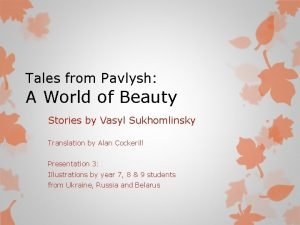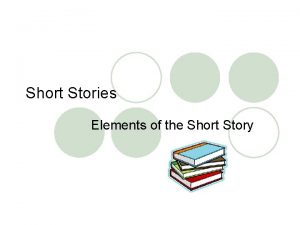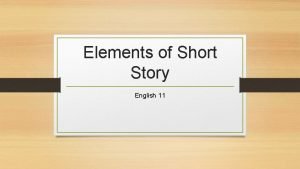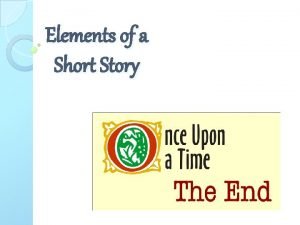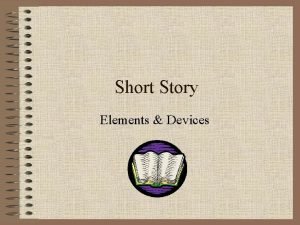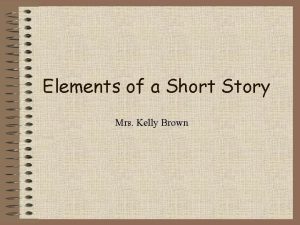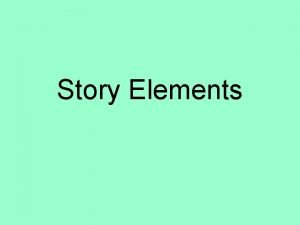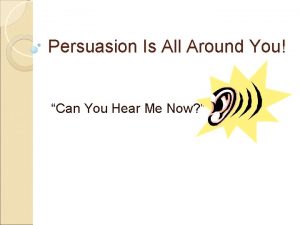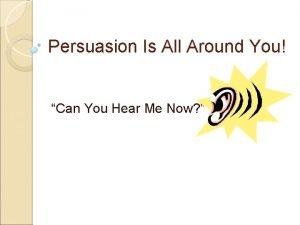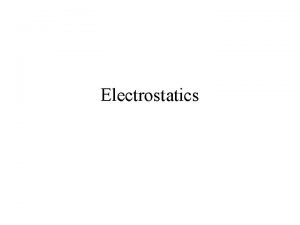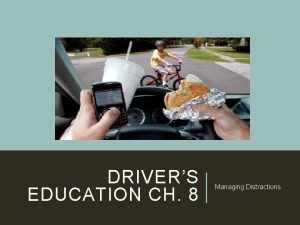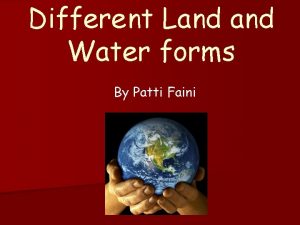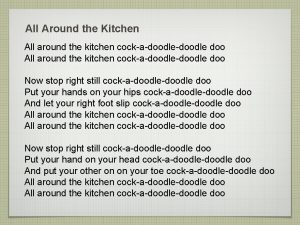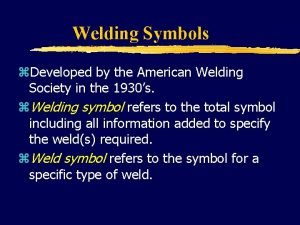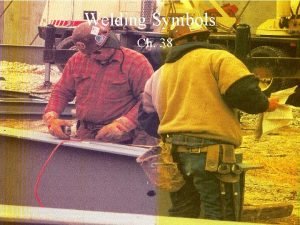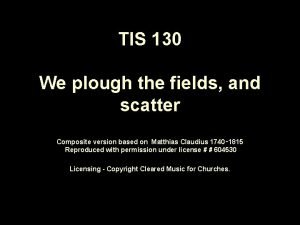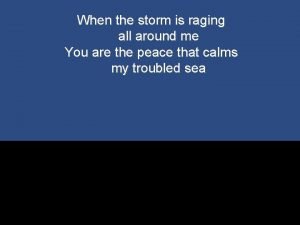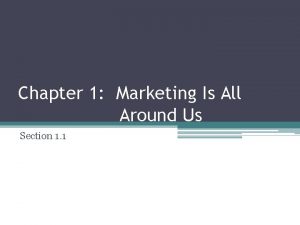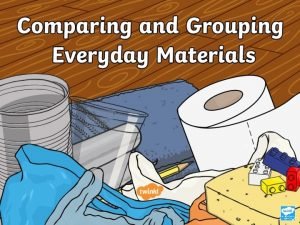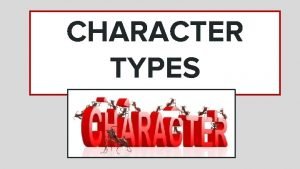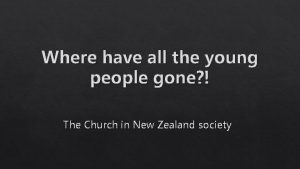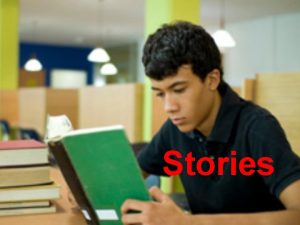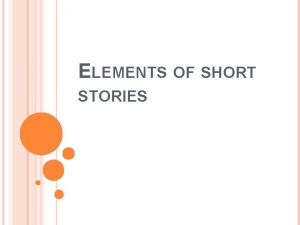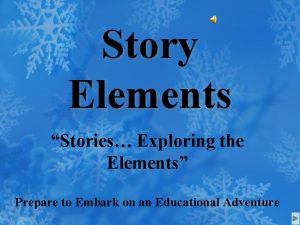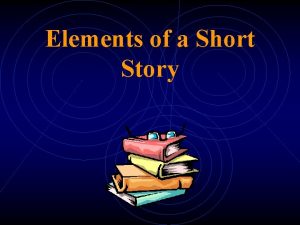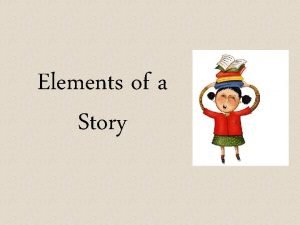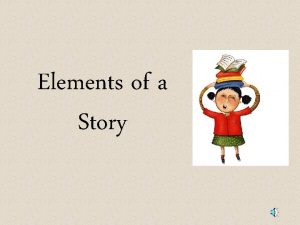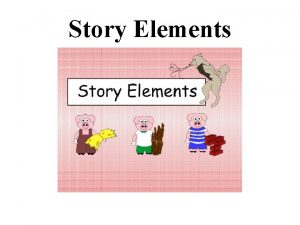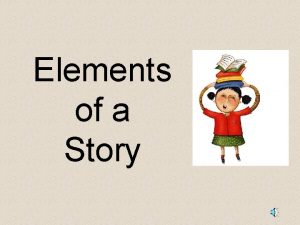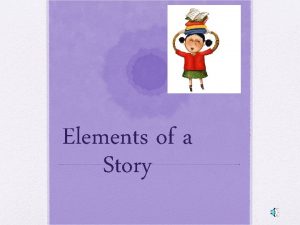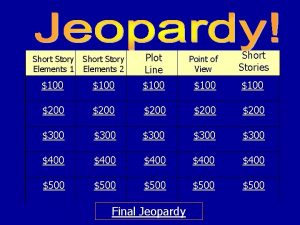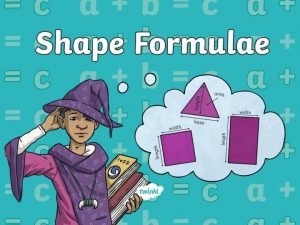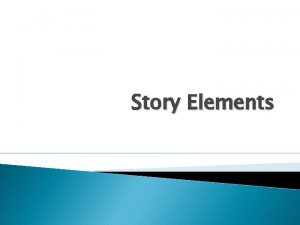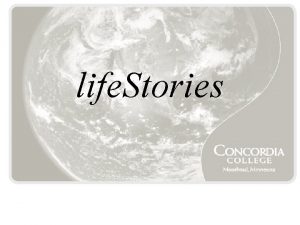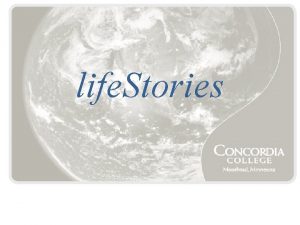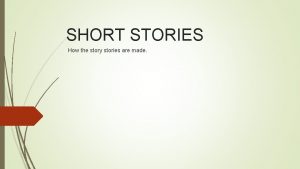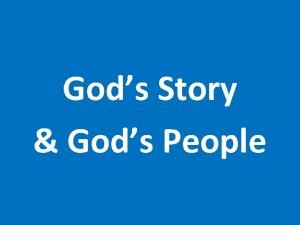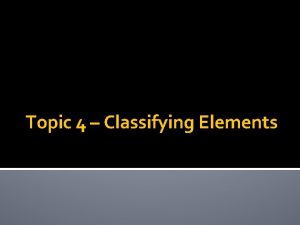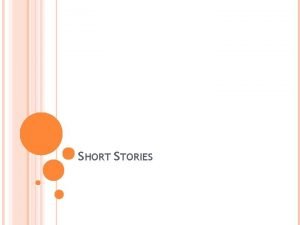Story Elements Stories are all around us People


































- Slides: 34

Story Elements

Stories are all around us • People have been telling stories for thousands of years • Stories help us to understand our world, help us to think about the experiences of others, help us to imagine other places and other worlds • And…stories are fun to hear and read

What do all stories have in common? • • • Characters Setting Conflict (problem) Plot (events) Theme Point-of-view

Characters • Characters are the people, animals, or objects who make the action happen in a story • A story can have many characters, or just a few

Figuring out characters Usually, it’s easy to figure out the characters in a story. Just look for the names! “Why do I have to go and play with Matt in the forest again? ” Gwen groaned. “Because your mother and I said so, ” Gwen’s father replied. “Besides, I’m the king, so you have to do what I say. ” “Being a princess is stupid, ” grumbled Gwen. “What was that? ” her father asked. “Nothing, ” Gwen muttered.

Figuring out characters Look for dialogue in which another character is talking to the narrator. Can you find the narrator’s name? I looked down at the floor, ashamed and worried. My plan had failed! Now the castle hallways were filled with angry pigs and cows—definitely not what I had in mind. “Cassandra? ” my mother said. “Do you have an explanation for this? ” “Um—no, ” I replied. I knew that big trouble was ahead.

Setting • The setting is the time and place of the story. • It is where and when the story takes place. • Setting includes weather conditions

Setting • A story that happens in the PAST will have different events and rules from a story that happens in the PRESENT or the FUTURE

Inferring setting Sometimes the author doesn’t come out and explain the setting. Can you make an inference with the paragraph below? Anna sighed. She hated having to do so many chores. Her mother was always telling her to fetch the water from the well, watch her brothers and sisters, and fetch wood for the fire. “I wish that I could go to school, ” she sighed, looking at her bare feet. But with her father in the Union Army, she had to help her mother.

Inferring setting The clues tell us that this happens in the past. Can you guess the exact time period? There is a clue! Anna sighed. She hated having to do so many chores. Her mother was always telling her to fetch the water from the well, watch her brothers and sisters, and fetch wood for the fire. “I wish that I could go to school, ” she sighed, looking at her bare feet. But with her father in the Union Army, she had to help her mother.

Conflict • The conflict in a story is the problem or struggle • Every story has to have a conflict • The conflict is what drives the action in the story

Kinds of conflict • Stories have different kinds of conflict. It’s not always just two people fighting!

Person versus person • In this kind of conflict, two people have different ideas about what should happen • Here is a playground. What kind of person versus person conflict could happen here?

Person versus self • In this kind of conflict, the problem is inside the main character • The main character has some type of internal issue or decision to make • Suppose that you were hired to work on this ship and climb up into the rigging. What kind of internal conflict might you have?

Person versus nature • In this kind of conflict, someone has to battle the environment, usually to survive • Suppose you were stranded at this place. What would you need to survive?

Person versus society • In this type of conflict, a character go against a group or a societal idea. • The conflict of person versus society is often represented by a person who is an outcast or by a character who tries to break the normal rules society has established.

Problems are solved… • But conflicts are RESOLVED • The resolution of a story is at the end, and shows how all of the loose ends are tied up.

Plot • The events of a story make up the plot • In other words, the plot is what happens!

Plot • A story can have a short, simple plot, or a long, complicated plot • Can you think of an example of a story with a simple plot? A complicated one?

The plot of a story follows a pattern Climax Rising Action Falling Action Exposition Resolution

Point-of-view • Point-of-view is who is telling the story. In other words, it is the lens through which the story is being told. • It is the perspective or eyes through which we see the story.

Third Person Point of View Here the narrator does not participate in the action of the story as one of the characters, but lets us know exactly how the characters feel. We learn about the characters through this outside voice. First Person Point of View In the first person point of view, the narrator does participate in the action of the story. When reading stories in the first person, we need to realize that what the narrator is recounting might not be the objective truth. We should question the trustworthiness of the accounting. Omniscient and Limited Omniscient Points of View A narrator who knows everything about all the characters is all knowing, or omniscient.

Theme • The theme of a story is the underlying idea. It’s the big message, the big idea. • The theme is the point of the story. Without a theme, a story doesn’t make much sense.

More themes Friendship is more important than popularity Hold onto dreams, because they might come true Slow and steady wins the race Hard work will pay off in the end Can you think of stories or movies that show these themes?

Figuring out themes • In some stories, theme is easy to figure out • In other stories, it is a little more difficult • Different stories can have the same theme

Plot part: Exposition • The exposition is the beginning of the story • The author introduces the characters and the setting

Plot part: Exposition • Sometimes, the exposition can seem long and boring… • But some authors will plunge you right into the

Plot part: Rising action • Things get more exciting with the rising action • This is when the conflict is introduced

Plot part: Climax • The climax is the turning point of the story • It’s often the most exciting part • Nothing will be the same again

Think about it! • The plot of a story looks like a mountain. Why do you think the climax is at the top?

Plot part: Falling action • The falling action is the part of the story that happens after the climax • In some stories, this is a long part; in other stories, it happens quickly

Plot part: Resolution • The resolution is the end of the story • Everything is resolved and explained

Think about it! • A story that ends at the climax is called a cliffhanger. Why do you think this is so? climax

• Read “Seventh Grade” • Create a story mountain and identify the 5 features to explain the plot • Identify and describe the following: Characters, Setting, Conflict (problem) Climax • Plot (events) • Theme. Rising Action Falling Action • Point-of-view Exposition Resolution
 Insidan region jh
Insidan region jh Beauty stories from around the world
Beauty stories from around the world كما تدين تدان english
كما تدين تدان english Martin luther king of hinduism
Martin luther king of hinduism Name
Name Narrative writing elements
Narrative writing elements Short stories elements
Short stories elements Example of elements of a short story
Example of elements of a short story Short story elements
Short story elements Elements of short story example
Elements of short story example Short story kelly setting
Short story kelly setting All stories have
All stories have Meeting famous people around the world
Meeting famous people around the world What is persuasion
What is persuasion Persuasion is all around you
Persuasion is all around you Look down look up
Look down look up Light the candles all around the world
Light the candles all around the world Electricity is all around us
Electricity is all around us Distractions outside the vehicle are more easily managed
Distractions outside the vehicle are more easily managed Types of water forms
Types of water forms All around the kitchen cockadoodle doodle doo
All around the kitchen cockadoodle doodle doo Z weld symbol
Z weld symbol Welding types and symbols
Welding types and symbols We plough the fields and scatter modern version
We plough the fields and scatter modern version Marketing is all around
Marketing is all around When the storm is raging all around me
When the storm is raging all around me Chapter 1 marketing is all around us
Chapter 1 marketing is all around us Everything around us
Everything around us Marketing is all around us
Marketing is all around us Is roger a dynamic or static character
Is roger a dynamic or static character People in media and people as media difference
People in media and people as media difference Black eyed peas where is the love lyrics
Black eyed peas where is the love lyrics Transformed people transform people
Transformed people transform people People just people
People just people Where have all the young people gone
Where have all the young people gone

